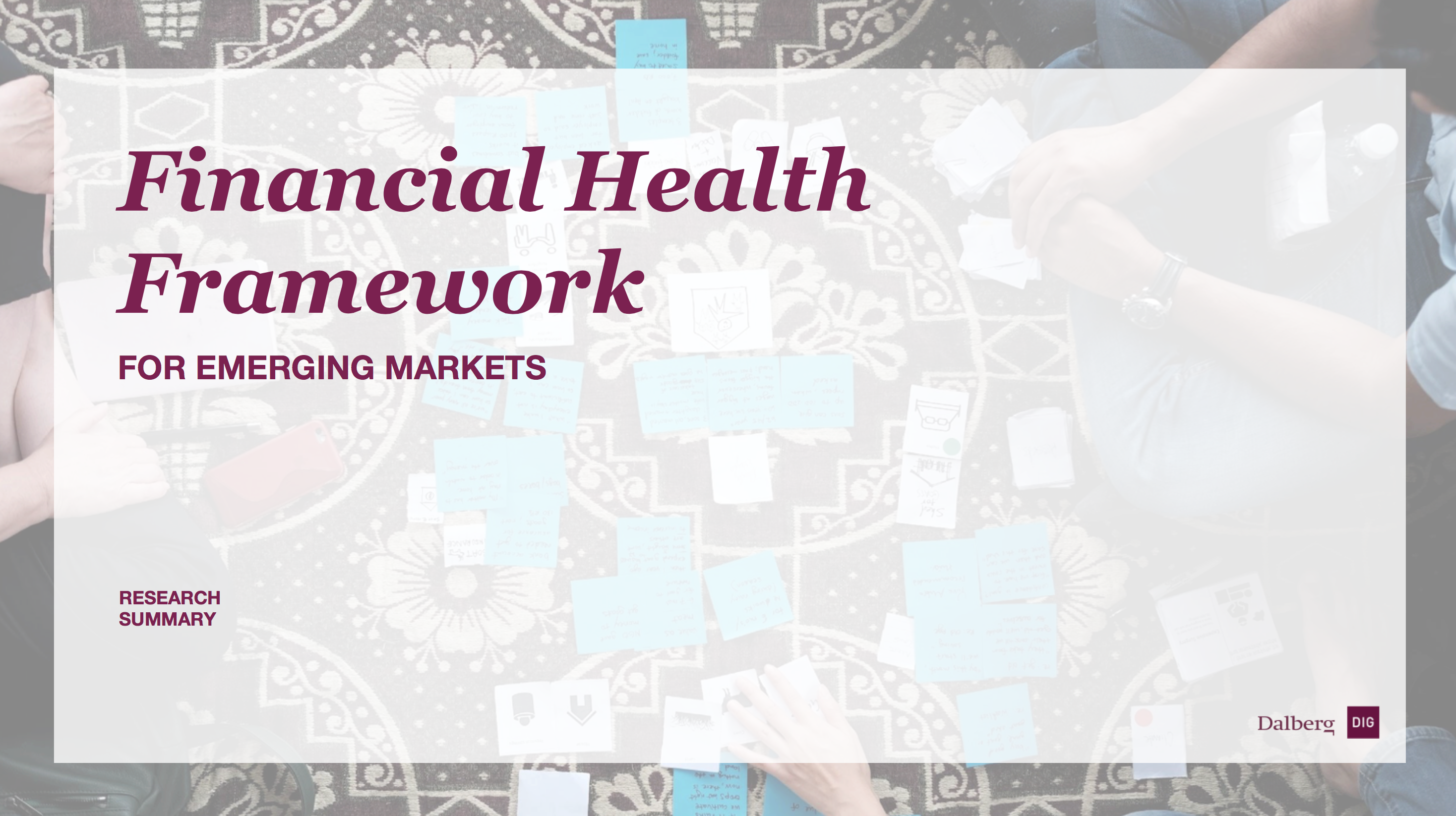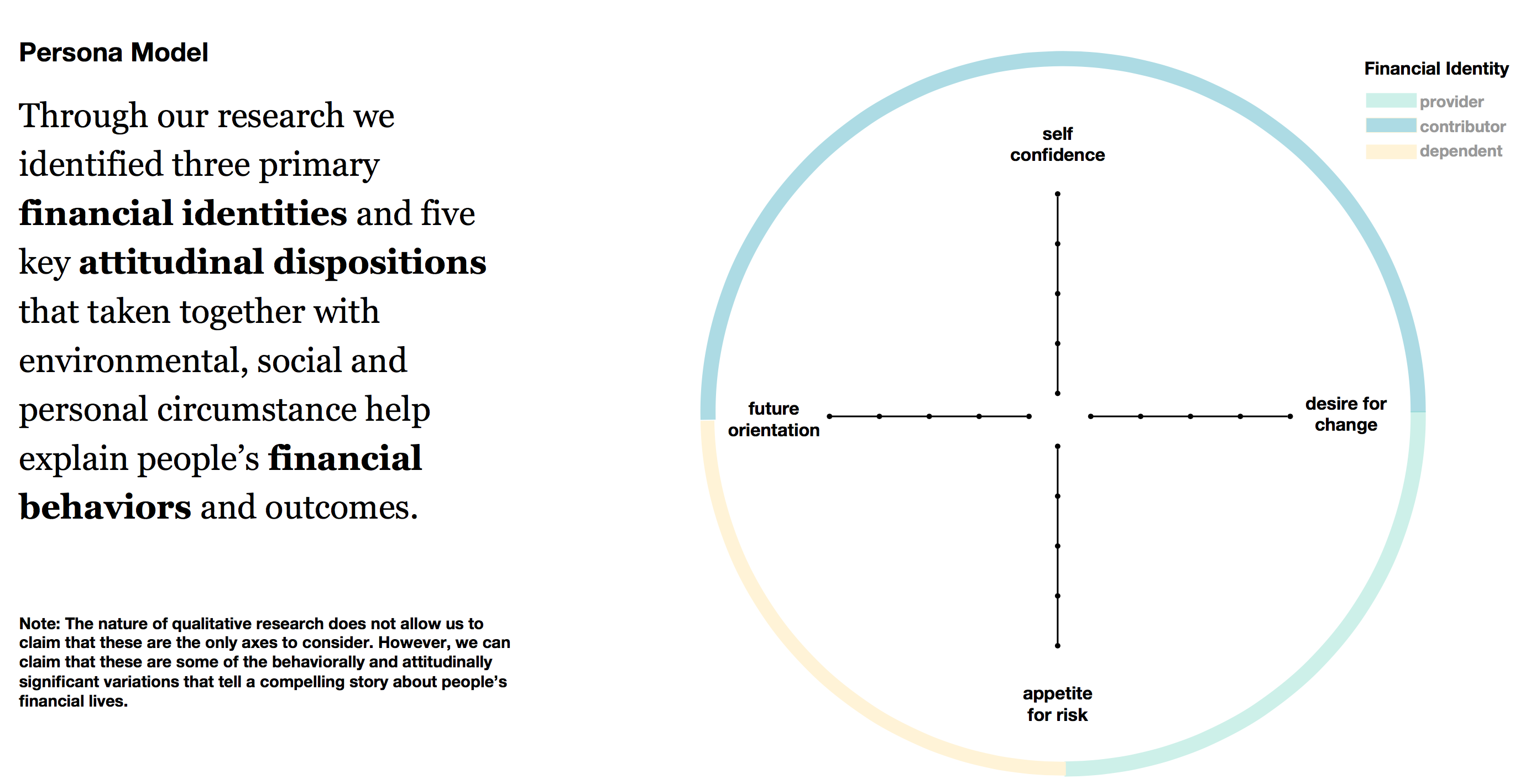Financial Health Framework
Design research and strategy for economic development
Summer 2016,
I worked at Dalberg Design on a Gates Foundation funded project about financial health in developing countries, focused on Kenya and India. For the project, I supported on-the-ground ethnographic design research, summarizing findings in a draft report supported by a facilitated workshop. Below is a summary of the project and the research process we went through.
Context
Org:
Duration:
Team:
Contribution:
Dalberg Design Impact Group
Jun-Aug 2016
Team Lead, Analyst, Consultant, Design Strategist
Design Research & Synthesis, Artifact Creation, Workshop Planning
Context
Org: Dalberg Design Impact Group
Duration: Jun-Aug 2016
Team: Team Lead, Analyst, Consultant, Design Strategist
Contribution: Design Research & Synthesis, Artifact Creation, Workshop Planning
From Inclusion to Health
Much of international development efforts have been targeted at advancing financial inclusion of the global poor. However, not as much has been done in terms of how inclusion translates to usage and leads to advancement of overall financial health and well-being. How does the everyday reality of the poor inform how they think about their financial lives and shape their behaviors and actions?
Towards a Collective Understanding
This is where design thinking comes in. Using human-centered research methods, a good amount of resilience and humility, we try to meet individuals where they are, asking them to tell us and show us (and for us to listen) about the day-to-day ways they make decisions for themselves, their families, and their communities.
Project Brief
What behavioral framework would help multilateral aid agencies better design products and services to improve financial health and well-being for people living on less than $1 a day?
On-the-ground research
Traveling to rural and urban communities in Kenya and India, we used human-centered research methods to speak with people, collecting practices, behaviors, and mindsets on how they think about their financial lives.
We started from an initial framework looking at these questions from three perspectives: day-to-day management, building resilience, and capacity to capitalize on opportunities. Along the way, we looked for practices that would reveal attitudes, behaviors, and values that would suggest norms and approaches unique to participants' context.
We learned about the fungibility of assets as stores of values, the rich use of informal communal financial schemes, and the importance of familial and community roles in environments where interdependence was vital.
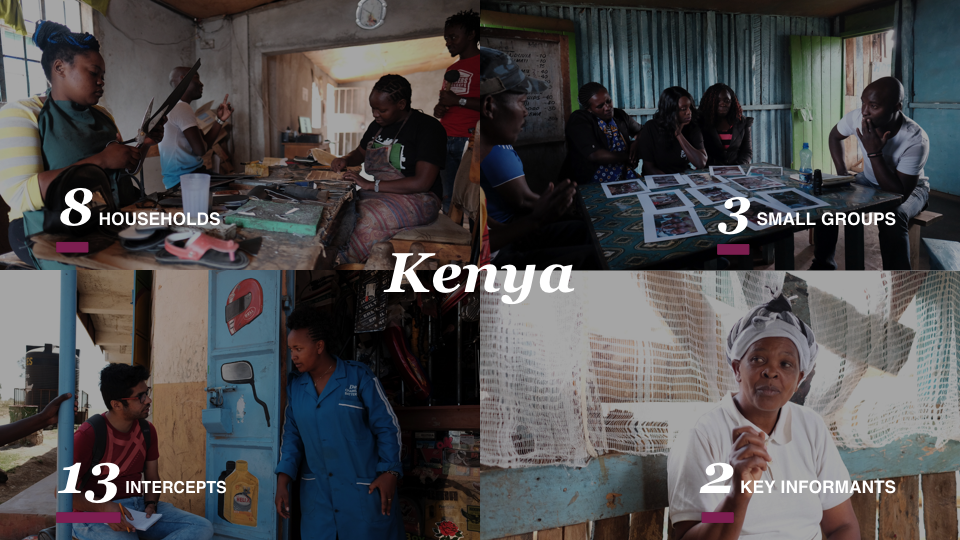
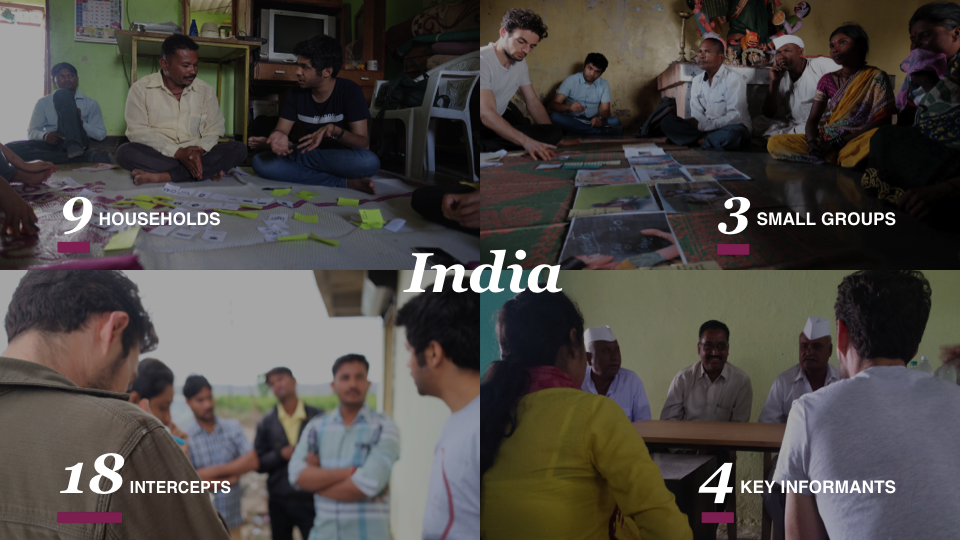
Synthesizing qualitiative research into conceptual frameworks
Each day we summarized our observations through a group synthesis, looking for dominant themes. Through a rigorous process of surfacing themes and tagging them to various categories, we iterated through conceptual frameworks of persona models and of financial health factors. Key insights emerged around the use of formal and informal social networks to build reserves as well as to promote self-monitoring.
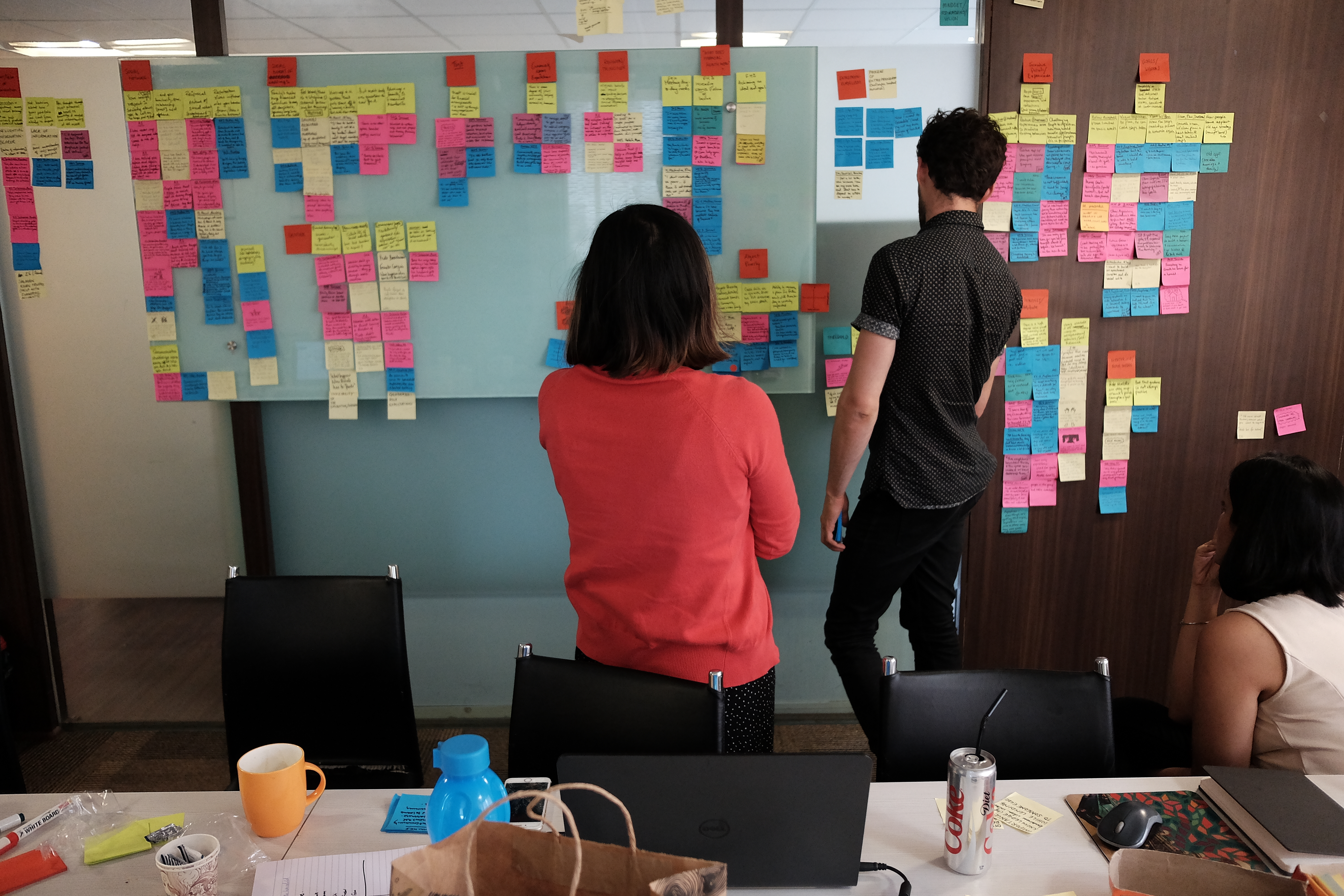
Anchoring frameworks with a quantitative survey
The framework for financial health factors situated behaviors within environmental, social, and economic drivers and was used to informed the design of a survey tool. The survey collected information from over 1000 people in Kenya and India to paint a detailed picture of financial health amongst the poor.
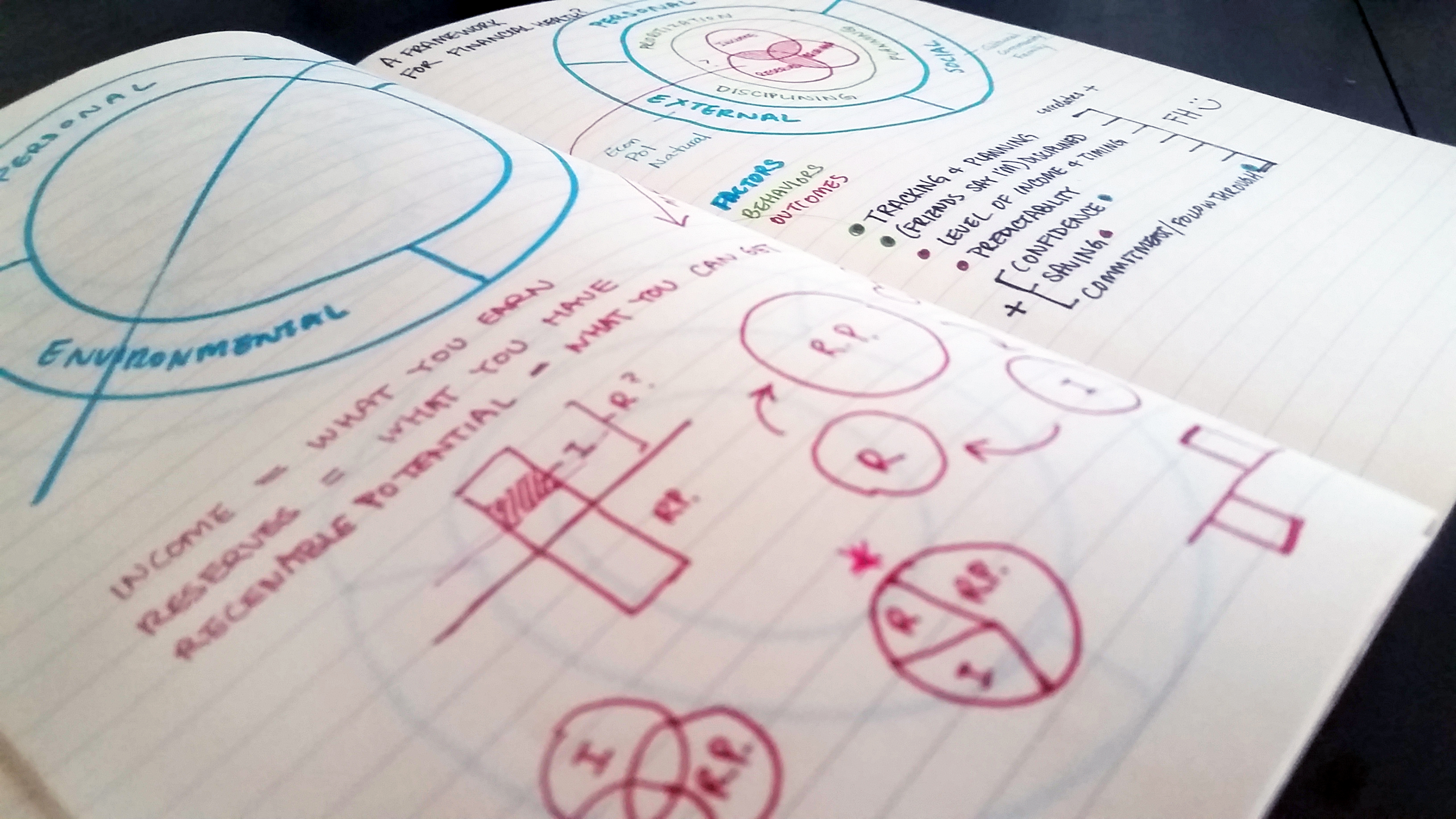
Creating an experience for research findings
We prepared two day-long workshops with stakeholders throughout the research process to present our findings and host discussions through interactive exercises and visual facilitation.
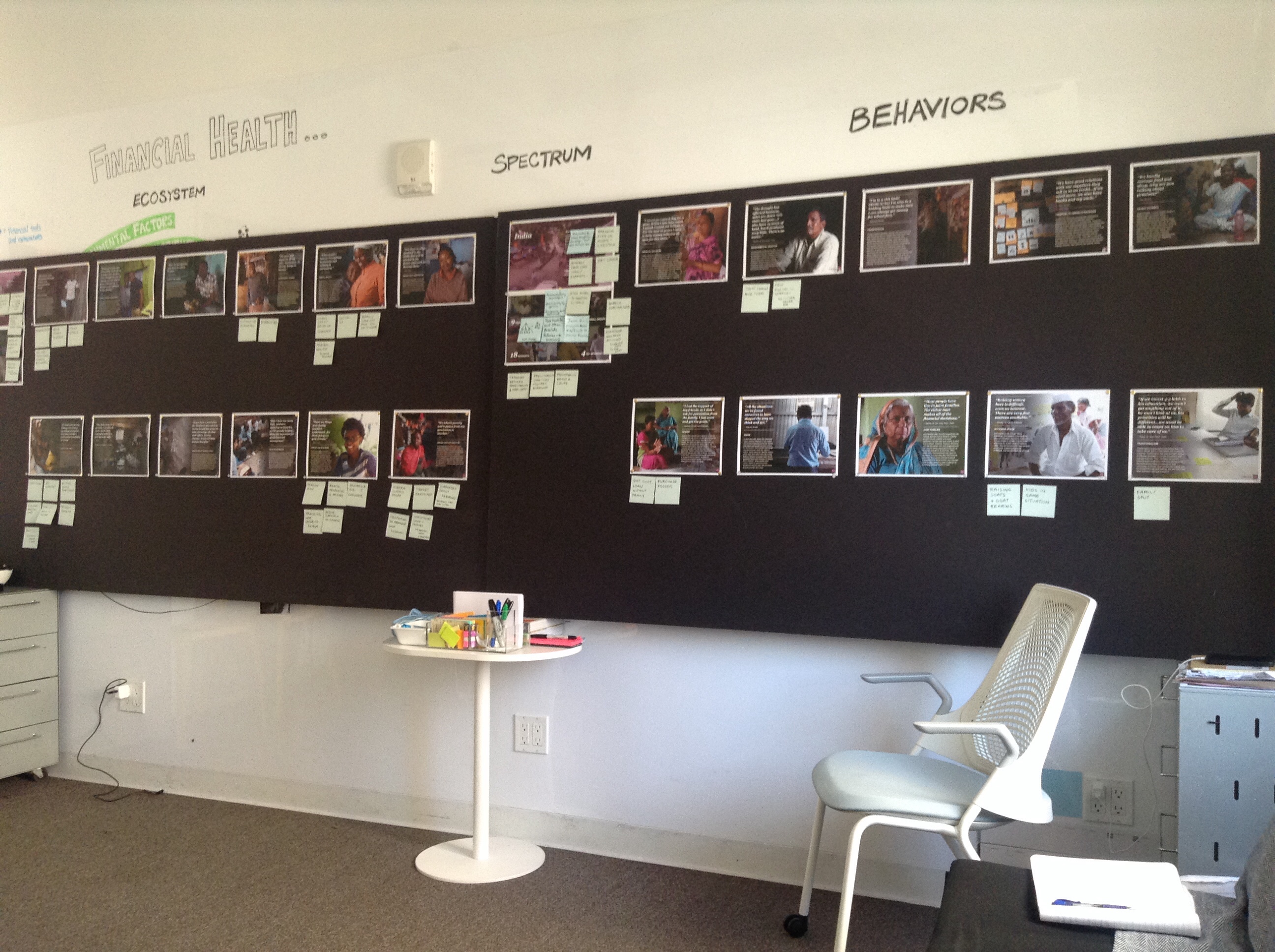
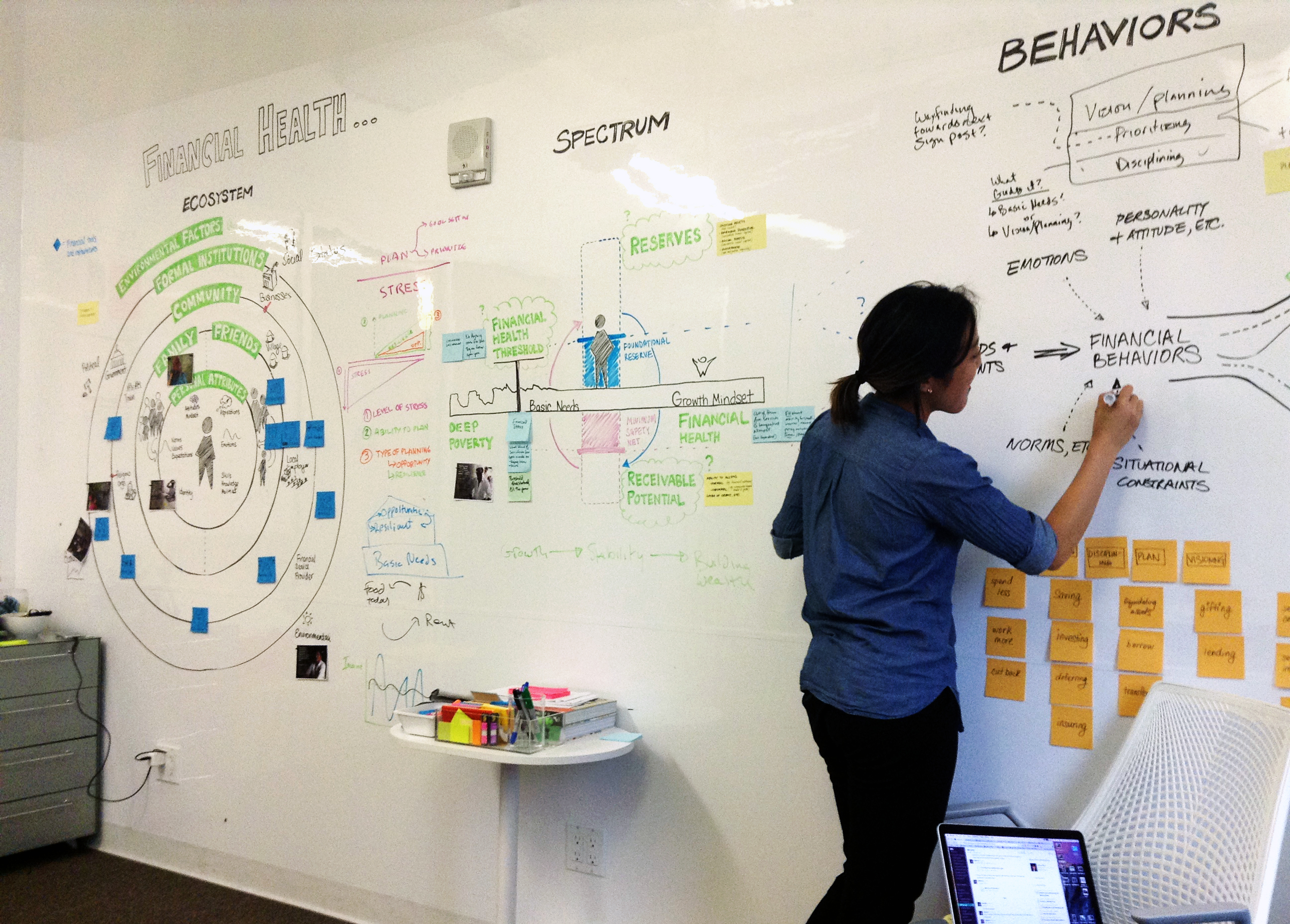
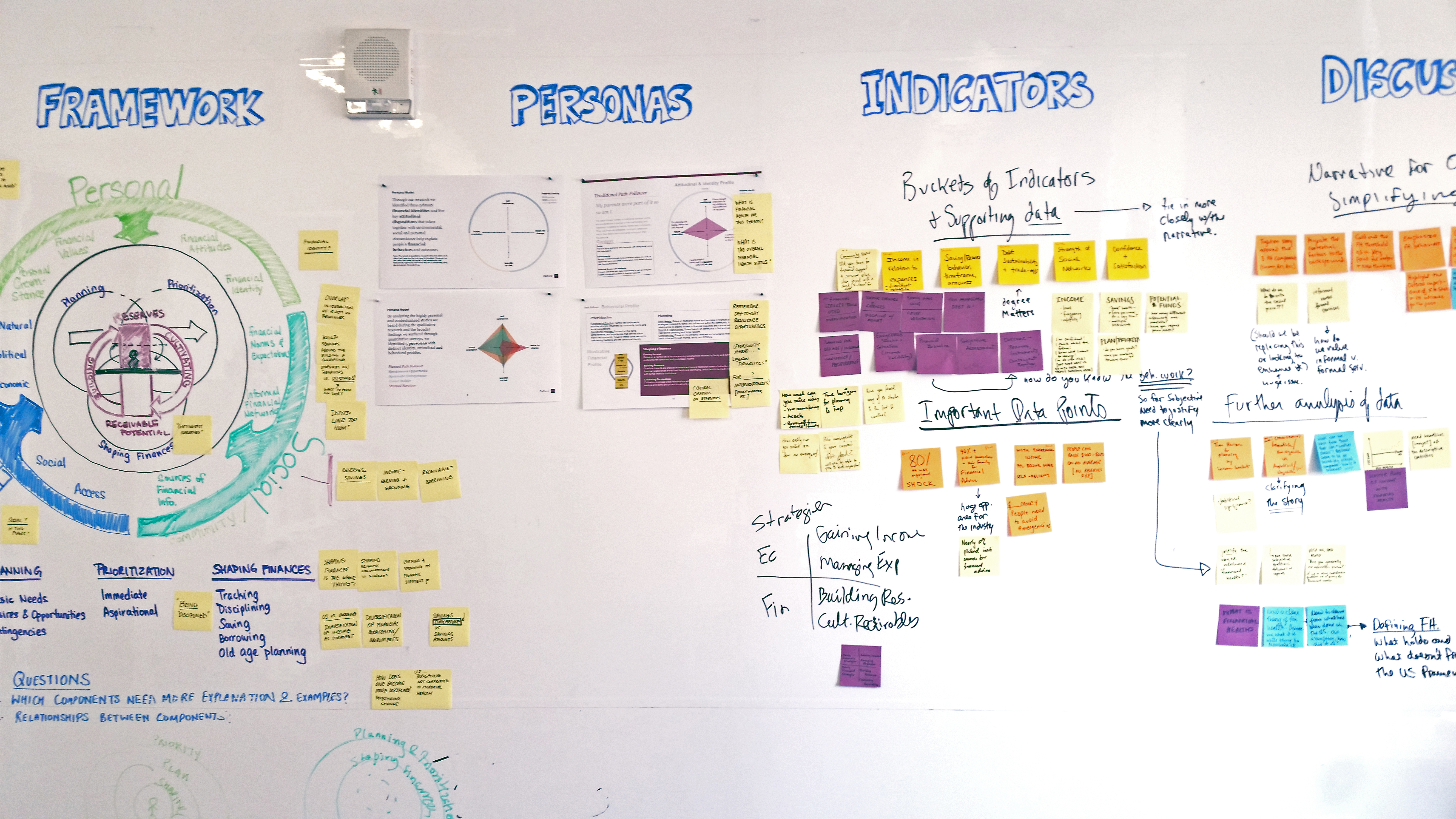
Leading thought leadership
Our design research led to insights and principles for designing for financial health, including a framework for assessing financial health, a set of persona models used to express our understanding of the poor, the results of a quantitative survey sampling financial health in Kenya and India, and a set of potential applications from the research findings.
